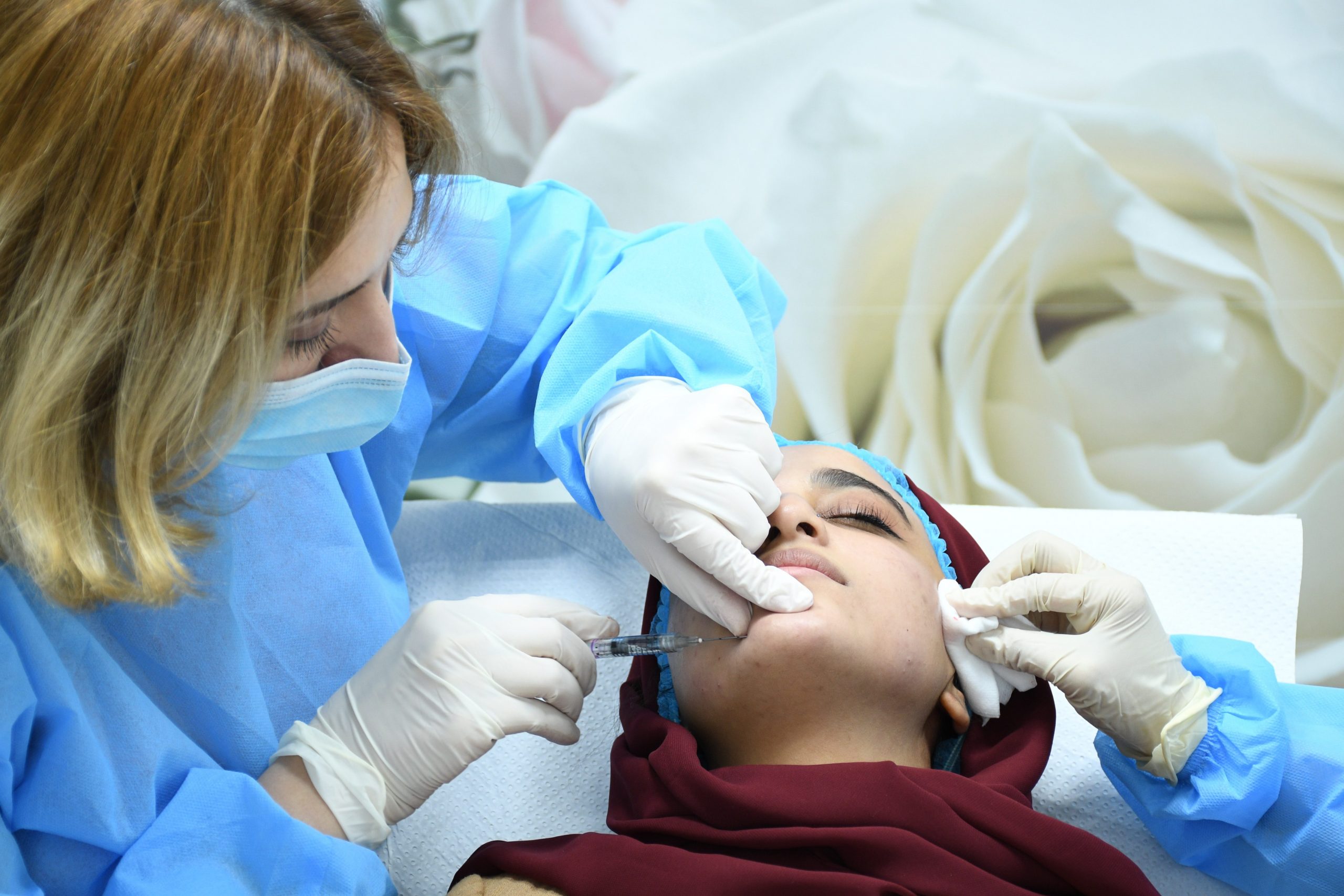In Qatar, specialists are using technology for cosmetic treatments to provide a more natural feel in a bid to avoid the “plastic look”.
Cosmetic treatments like botox and dermal fillers have spiked in popularity worldwide due to their ability to revitalise appearances, enhance beauty and erase signs of ageing.
As the trend continues to spread, specialists in Qatar and around the region are witnessing an increased demand in cosmetic procedures in both men and women of different ages.
While botox is usually used to erase signs of ages or to get rid of unwanted expression lines or wrinkles, dermal fillers are substances used to fill in areas that lack or have lost volume, to add fullness or extra volume – most notably lips.
The method for both is usually swift and painless, however experts say it is absolutely vital to know who you are entrusting to provide the service, noting it is paramount to know exactly what substances are used in the injections.
Botox and fillers: differences, uses, methods, warnings
Speaking to Doha News, Dr. Eliana Ghosson Salloum, a Qatar-based dermatologist that specialises in cosmetic treatments, delved deeper into the topic.
“Botox relaxes the muscles of the upper face to reduce or remove wrinkles, mainly on the forehead and around the eyes,” she said, noting that “it does not increase the volume, it only affects the muscle movement to treat expression lines and ageing signs.”
On the other hand, fillers contain a substance that is taken originally from compounds and tissues found in the human body, she noted. Fillers are the kind of injection people get to make their lips or cheeks look fuller, however, it can also be used in different areas of the body.
Today, the most popular kind of filler used is Hyaluronic acid, which allows the patient to essentially “undo” the procedure if need be. “The good thing about this kind of filler is that it could be removed completely by a substance called hyaluronidase that is used to break down the Hyaluronic acid,” she said.
As technology continues to advance, doctors are able to opt for newer and better methods to carry out cosmetic procedures.
The most modern method is MD Codes, which is a technique that works on the precise location, layer, tool, delivery system and product volume to achieve optimal results, regardless of the patient’s age, gender or ethnicity.
“MD Codes is a method that aims to preserve the youthfulness of the face without filling it with substances that give it the fake or plastic appearance. Previously, excessive plumping was a trend that made the face and lips look fake and plastic,” the doctor explained.
Such cosmetic treatments gained popularity as people became increasingly exposed to social media, where “unrealistic” beauty standards were amplified and fed into fake perfectionism.
“Now people are asking for a more natural look.”
Now, there are certain approaches known as the golden ratio, which measures the proportions of the features in order to determine what cosmetic treatment is medically correct to provide a more natural result.
Botox has been approved by the US Food and Drug Administration (FDA) due to its significant efficacy and safety. While it is known for beautification purposes, it can also be used to control excessive sweating underarms.
“This is extremely important especially during the summer, as this condition causes social embarrassment to many,” the specialist pointed out.
Botox can also resolve jawline issues that arise with jaw clenching (also called bruxism), which is often related to stress or anxiety. Those who find themselves constantly grinding their teeth and clenching their jaws develop a facial problem that makes the lower face look more masculine.
“People who face this problem can rest assured, because it could be simply treated with botox,” she added.
Substances prohibited in Qatar
Naturally, not all procedures go to plan. A quick search on fillers or botox side effects online will highlight just how serious this can be – raising necessary concerns on the risks of such substances.
“Previously, some doctors used other kinds of substances including silicones, but these are now prohibited in Qatar due to their severe side effects,” Dr. Salloum said, noting all substances that are not approved by the FDA or those which have shown serious disadvantages are banned by health authorities in the Gulf state.
Thankfully, this means all kinds of approved cosmetic treatments available here are safe and no severe side effects have been reported so far, the doctor said.
“Studies proved that permanent substances cause fibrosis and inflammation leading to long-term health issues,” she said. However, these permanent and semi-permanent cosmetic treatments are not available in any clinic in the Gulf state.
Reported side-effects
“The only side effect I have encountered with botox is droopy eyelid, which is very rare and only occurs when a patient does not adhere to the doctor’s instruction after receiving injections in the upper face,” she noted.
After botox, doctors warn patients to avoid certain activities for their own safety, such as rubbing the injection site, laying on your face, sleeping or taking a nap.
Even if a droopy eyelid emerges, there is little to worry about as this is just a temporary side effect that disappears in a matter of two to three weeks.
Read also: ‘Barbaric’ new weight loss device causes global outrage
“I believe that botox lasts longer if patients take care of their face because if the skin is exhausted the botox-effect won’t last for too long. In my professional opinion, exposure to sun and heat makes it disappear quickly,” she added.
She warned that serious and severe side effects mainly occur if patients go to unprofessional, unregistered or doctors that do not specialise in administering such treatments. For this reason, it is essential to visit a specialist for such cosmetic procedures to avoid adverse effects such as skin damage.
How long does it last?
In general, botox lasts for three to four months “because it is natural, unlike permanent substances that are not recommended at all.”
As for dermal fillers, the duration depends on the product type and injection site.
For example, “for the jawline we use highly cross-linked fillers that last longer than other types,” the specialist explained, adding that cheeks injection last for a lot less time.
“Fillers in the lips are the fastest to dissolve but it depends on the product used,” she continued. “Generally, fillers last from 6 months to one year.”
To help fillers and Botox last longer, the doctor recommends drinking adequate amounts of water, frequently moisturising the skin and using sunscreen with high SPF to protect the skin from the damaging effects of the heat and sun.
The comments provided in this article are not to be taken as medical advice. Those interested in any treatments mentioned are advised to conduct research into the procedures, including seeking advice from their own health professionals and doctors.







